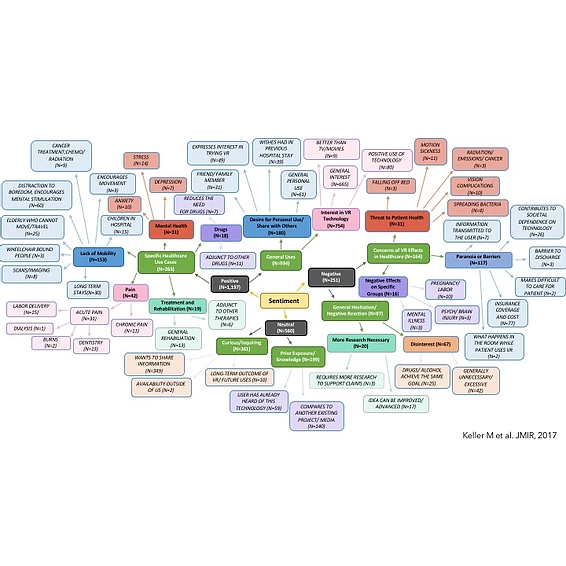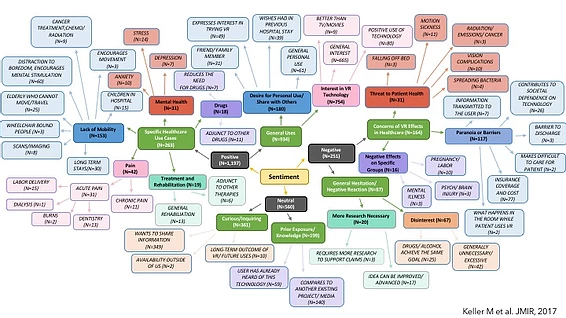What Does the Public Think About Using VR for Healthcare? We Can Learn A Lot from Facebook Comments

Virtual reality (VR) technology provides an immersive environment that enables users to have modified experiences of reality. VR is increasingly used to manage patients with pain, disability, obesity, neurologic dysfunction, anxiety, and depression. However, public opinion regarding the use of VR in health care has not been explored. Understanding public opinion of VR is critical to ensuring effective implementation of this emerging technology. Our VR research team at Cedars-Sinai Medical Center decided to examine public opinion about health care VR using social listening, a method that allows for the exploration of unfiltered views of topics discussed on social media and online forums.
In March 2016, NBC News produced a video depicting the use of VR for patient care. The video was repackaged by NowThis, a social media news website, and distributed on Facebook by Upworthy, a news aggregator, yielding 4.4 million views and over 2.5K comments. We used Microsoft Excel Power Query and ATLAS.ti software to analyze the comments using content analysis and categorized the comments around first-, second-, and third-order concepts. We determined self-identified gender from the user's Facebook page and performed sentiment analysis of the language to analyze whether the perception of VR differed by gender using a Pearson's chi-square test.
We found that out of the 1614 analyzable comments, 1021 (63%) were attributed to female Facebook users. There were 1197 comments coded as expressing a positive perception about VR (74%), 251 coded as expressing a negative perception and/or concern (16%), and 560 coded as neutral (35%). Informants identified 20 use cases for VR in health care, including the use of VR for pain and stress reduction; bed-bound individuals; women during labor; and patients undergoing chemotherapy, dialysis, radiation, or imaging procedures. Negative comments expressed concerns about radiation, infection risk, motion sickness, and the ubiquity of and overall dependence on technology. There was a statistically significant association between the language valence of the Facebook post and the gender of the Facebook user; men were more likely to post negative perceptions about the use of VR for health care, whereas women were more likely to post positive perceptions (P<.001).
Here is a blueprint of all the themes and sub-themes identified by the online reviewers:

The full article is available for free at this link. Feel free to download and read to learn more about this research and our detailed findings. The results offer a blueprint for the future of therapeutic VR research.

Overall, most informants expressed positive perceptions about the use of VR in a wide range of health care settings. However, many expressed concerns that should be acknowledged and addressed as health care VR continues to evolve. Our results provide guidance in determining where further research on the use of VR in patient care is needed, and offer a formal opportunity for public opinion to shape the VR research agenda.
The full article is available for free at this link. Feel free to download and read to learn more about this research and our detailed findings. The results offer a blueprint for the future of therapeutic VR research.
December 19, 2017



